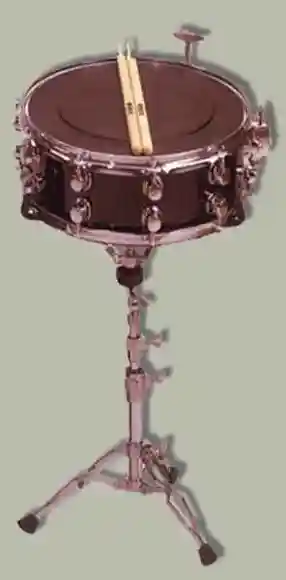Historical development » snare drum » Philipp Dangas
Historical development of the snare drum
In the Western European Middle Ages, the (small) drum can be found as early as the beginning of the 13th century, as an accompanying instrument for the so-called "one-handed flute" ("Galoubet"), a small beaked flute with 2 or 3 tone holes.
The player held the drum tucked under his arm and played the flute with his left hand while striking the drum with a mallet with his right hand. In the later Middle Ages, the drum became larger and louder and was made into a military instrument, especially by the Swiss mercenaries.
In the 18th century, the cylinder of the drum (“frame”), which had previously been made of wood, began to be made of brass and its height reduced. Finally, in the 19th century, by reducing the height again, today's "small drum" was created. With the development of its current basic form (with a flat metal frame, tension screws and snare strings) in the first half of the 19th century, it was accepted into the symphonic orchestra. Here it was mainly used in the "Grand Opera" to achieve realistic, mostly martial effects, e.g. by Giacomo Meyerbeer in the "Sword Consecration" of his "Huguenots" (1836) and by Richard Wagner in "Rienzi" (1842). Giuseppe Verdi also used the snare drum in his early operas with great skill and great effect.
Since that time, the snare drum has been one of the main instruments in an orchestra, namely one of the main instruments in the percussion section of the symphonic orchestra. And no longer just to perform the effects described above, but primarily as a rhythm, tone coloring and tone enhancement instrument.
Download Size: 174 Kilobytes
Table summary of the use of the snare drum in music
The table below shows the use of the snare drum in music shown. Musical works are performed with the name of the composer and the work.

The snare drum in large scale
The snare drum originally came from military music. And can be traced back to the medieval drum. Around the middle of the 19th century, however, the snare drum was increasingly used in orchestral music.
Today the snare drum is also used as a solo instrument. Well-known composers include Siegfried Fink and Charles Wilcoxon.
Internal search function
| Name | Value | Delete |
|---|